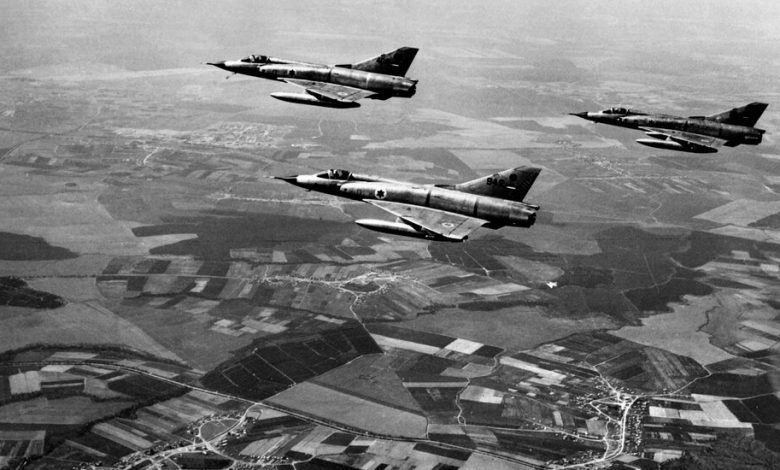Here is a timeline of the clashes between Palestinian militants and Israel.

The scale and complexity of Saturday’s attacks by Hamas shocked leaders across the world, but they came after decades of a relentless and deadly conflict that has killed thousands of people, forced entire generations to grow up under occupation, or created constant anxiety of impending rocket fire or bombings.
Here is a summary of the main events of the conflict, which spans two centuries.
-
On several occasions this year, hundreds of Israeli forces carried out military raids in the Palestinian city of Jenin. In January, a Palestinian man killed seven people at a synagogue in East Jerusalem.
-
After a spate of terrorist attacks in Israeli cities in 2022, Israeli forces killed at least 166 Palestinians in the Israeli-occupied West Bank.
-
In May 2021, the Israeli police raided Al-Aqsa Mosque in Jerusalem, the third-holiest site in Islam, which set off an 11-day war between Israel and Hamas that killed more than 200 Palestinians and more than 10 Israelis.

Israeli police entering the Aqsa mosque compound in Jerusalem in 2021.Credit…Ahmad Gharabli/Agence France-Presse — Getty Images
-
In 2018, at least 170 Palestinians were killed as Israel responded to protests along the barrier fence that separates Gaza and Israel.
-
In 2014, Hamas kidnapped and killed three Israeli teenagers, prompting attacks from Israel, and rocket launches from Gaza, in a conflict that killed more than 1,881 Palestinians and more than 60 Israelis.
-
In November 2012, Israel killed Ahmed al-Jabari, Hamas’ military chief, setting off more than a week of an exchange of fire in which more than 150 Palestinians and at least six Israelis are killed.
-
In January 2009, Israel and Palestinian groups declared unilateral cease-fires, then Israel withdrew from Gaza, and redeployed to the Strip’s perimeter.
-
In response to rocket fire from Gaza, Israel launched an attack on Hamas targets in December 2008 that killed 200 Palestinians. Shortly after, they opened a ground war against Hamas. In total, 1,200 Palestinians and 13 Israelis were killed.
-
In January 2006, about a year after the death of the Palestinian leader Yasir Arafat, the co-founder of the paramilitary organization Fatah, Hamas won the Palestinian parliamentary election. One year later, Hamas seized control of Gaza, routing the Fatah forces.
-
In September 2005, Israeli troops pulled out of Gaza, but Israel came under criticism for restricting the movement of Palestinians coming in and out of the strip.
-
In September 2000, a few months after negotiations between Israel and Palestine reached an impasse at Camp David, a Second Intifada began, with Palestinian youth throwing stones at Israeli police. Support for Hamas continued to grow within Palestine because of its readiness to fight Isreal.
-
In 1997, two suicide bomb attacks killed 27 people, and Israel’s prime minister, Shimon Peres, said he would wage an incessant war against Hamas.
-
In 1993, Mr. Arafat signed the Oslo accords with Israel, and committed to negotiating an end to the conflict based on a two-state solution. Hamas, which opposed the deal, launched a series of suicide bombings in Israel.
-
In December 1987, Palestinians living in the West Bank and Gaza started the First Intifada against Israel. Muslim Brotherhood members founded Hamas.
-
On March 26, 1979, Egypt and Israel signed a peace treaty at the White House which led to Israel’s complete withdrawal from the Sinai Peninsula. The two countries agreed on the framework of an agreement to allow for self-rule for Palestinians living in occupied territories. Three years later, President Reagan expressed his support for their full autonomy with some Jordanian supervision, but Israel rejected the plan.
-
On Yom Kippur in October 1973, invading forces from Egypt and Syria tried to persuade Israel to negotiate better terms for the Arab countries. Nearly 2,700 Israeli soldiers died in the 19-day war and thousands were injured out of a population of about 3 million at the time.
-
In June 1967, during the Six-Day War, Israel gained control of the Gaza Strip and the Sinai Peninsula.
-
In January 1957, Israel withdraws from Egyptian land, except from the Gaza Strip and the area of the Gulf of Aqaba, arguing that the Gaza Strip never belonged to Egypt.
-
In October 1956, few months after the Egyptian president nationalized the Suez Canal waterway — cutting off Israel from shipping, Israel invaded the Sinai Peninsula and the Gaza Strip. In November that year, the United Nations called for Britain, France and Israel to withdraw their troops from Egypt.
-
In 1949, the newly created State of Israel signed a series of truces with Arab countries that had declared war on it. Under the 1949 agreements, the Gaza Strip was under Egypt’s control.



